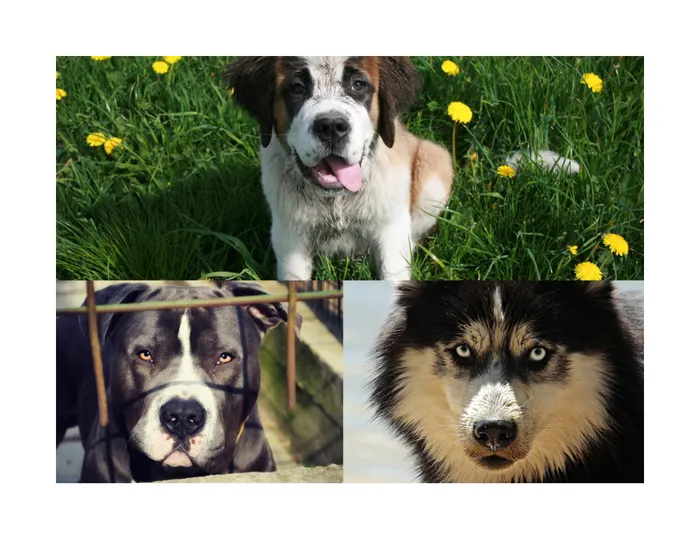Thinking of getting a power breed dog as a pet? This is what you should know

The keeping of power breeds such as St Bernards, pit bulls and huskies, has been a controversial topic, says the writer. Picture: pangrea, NoName_13 and Cseszka/Pixabay
Having reported on incidents and cases involving “power breeds” and worked with canine rescue and rehab organisations over the last 8 months or so, I have come to learn the basics of how to keep power breed dogs such as pit bulls, Rottweilers, St Bernards, and even boxers and huskies.
Keeping power breeds as family pets has been a controversial topic recently, as poor genetics and inexperienced owners may allow these animals to pose a threat to public safety and the welfare of other animals.
However, with proper training, socialisation, and responsible ownership, it is possible to safely keep power breeds as pets.
These are some of the tips I have learned over the course of reporting on incidents involving power breeds in South Africa.
One of the key solutions to keeping power breeds as pets is proper training and socialisation.
This includes basic obedience training, as well as specific training to address any aggressive or aggressive-like behaviour.
This training should be done by a qualified professional who has experience working with genetically aggressive dogs.
Socialisation is also important, as it helps the dog to become accustomed to different people, animals and environments, which can help to reduce the likelihood of aggressive behaviour.
Another solution is responsible ownership. This includes ensuring that the dog is properly cared for, including providing adequate exercise, nutrition, and veterinary care.
It also means being aware of the dog’s behaviour and taking steps to address any aggressive or aggressive-like behaviour.
This includes supervising the dog when it is around other people and animals and never leaving the dog unsupervised with children or other vulnerable individuals.
It is also important to ensure that the dog is kept in a secure environment, such as a fenced-in yard or dog run.
This can help to prevent the dog from escaping and coming into contact with other people and animals, which can lead to aggressive behaviour. It also means keeping the dog on a leash when in public places.
In some cases, it may be necessary to take additional steps to manage the dog’s behaviour.
This can include the use of behaviour-modifying drugs, such as anti-anxiety medications, which can help to reduce aggressive behaviour.
However, these should only be used under the guidance of a qualified veterinarian or animal behaviourist.
Another important solution is to educate the public about vicious dogs. This includes educating dog owners about the responsibilities of owning a power breed, as well as educating the general public about the potential dangers of these animals.
This education can help to reduce the fear and misunderstanding that often surrounds power breeds and can also help to reduce the likelihood of aggressive behaviour.
Current Affairs
Related Topics: